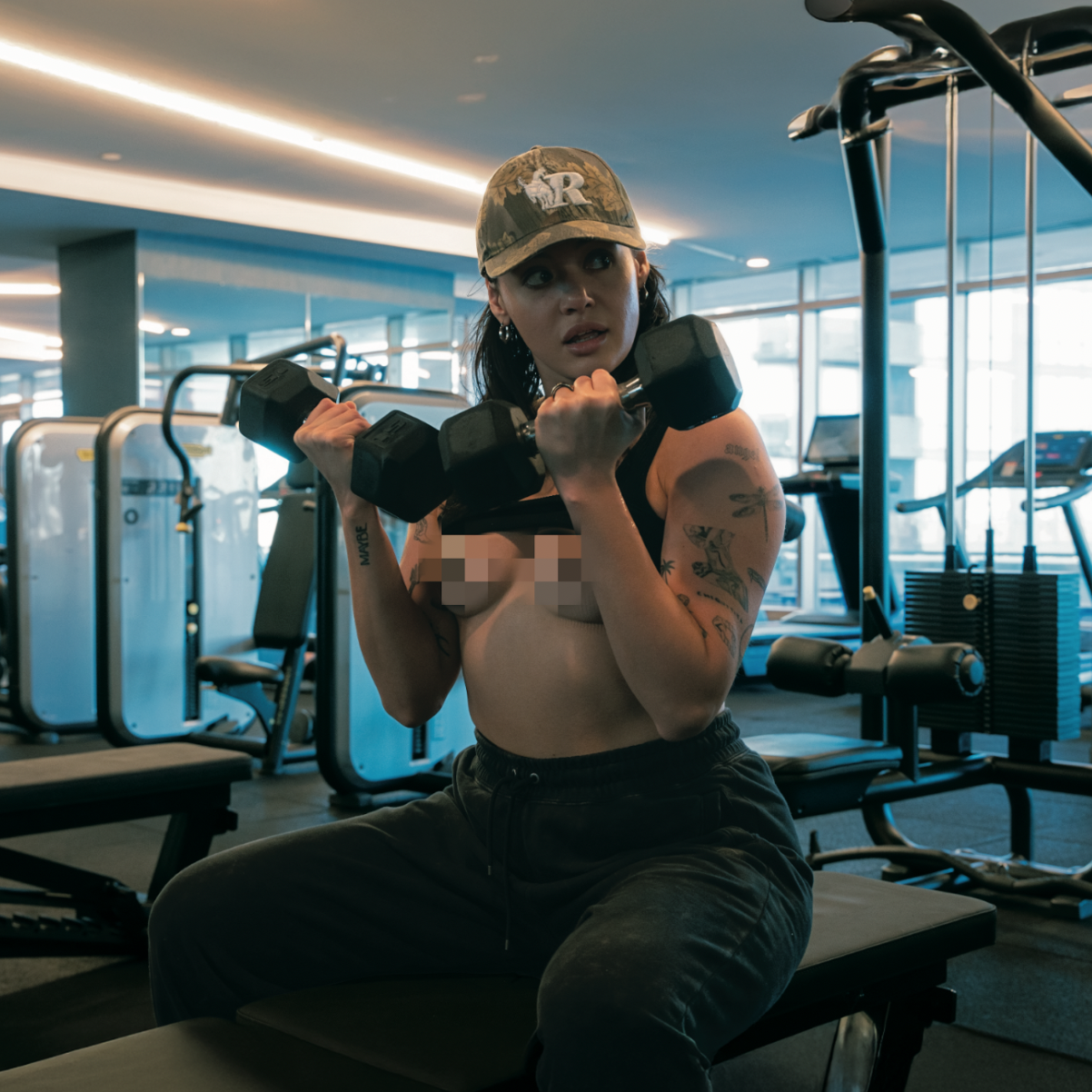
“Women Who Run with the Wolves” by Paula Romeu Garcia
Paula Romeu Garcia’s Topless America
A striking photography show asks: why can’t I be exactly who I am, right in front of you?
By Naava Guaraca
01.19.2025
The figures in Paula Romeu Garcia’s America are, like you and me, unspecial. They roam the world in mundane ways—reading on the train, sharing a picnic in the park, lifting weights in the gym. But, unlike you and me on most days, they do these activities topless. Or, as Romeu Garcia censors the word in her solo show at All Street Gallery: “topl3$$.”
In “Yellow Endurance,” a woman drives a convertible, her chest revealed to the viewer as she twists backwards to reverse her car. The photograph is withholding—it captures what appears to be a city street, but we can’t otherwise place the setting. In “Blue Perseverance,” a woman lifts weights in the gym with her gaze cast to the side. In both photos, markers of wealth spring up quietly: a casual sports car, or an empty gym in what appears to be a highrise building. The photographs are squares, which may always remind me of Instagram posts. But in showing them at 30in x 30in, Romeu Garcia likely wants them to feel relatable and life-sized.

“Yellow Endurance“ (Left) and
“Blue Perseverance” (Right) by Paula Romeu Garcia
Perhaps the most familiar image is “Violet Confidence,” where a woman rides the subway in a blue jacket that blends into the periwinkle of the seats behind her. Her head is bent, and her jacket is ajar to reveal her toplessness. She’s reading A Court of Wings and Ruin by Sarah J. Maas, and the massive, 736-page volume balances precariously in her hands. This photograph makes me giggle not because of the nudity, but because the choice of reading material is so timely—installments of the popular book series often grace the hands of my fellow subway riders. Here, Romeu Garcia reorients her conversation about mundane nudity with the public consumption of erotica. Her women and their objects become caricatures, exaggerated representations of a world in which toplessness doesn’t always turn heads. The more jarring aspects are the status symbols with which they engage.

“Violet Confidence” by Paula Romeu Garcia
These three photographs are part of a collection of seven, with each assigned a color from the ROYGBIV rainbow. Some of the pieces are obviously adorned with their color, while others aren’t: “Orange Grace” features just a single pumpkin on a stoop, and “Indigo Freedom” spouts a shade of blue akin to the one in “Blue Perseverance.” This spectrum of color feels like an attempt by Romeu Garcia at understanding the spectrum of cisgender womanhood as it exists in public space. But each person’s body looks similar, and is revealed to us in similar ways: breasts are either shown head-on, or gently revealed through the opening of a garment. Where Romeu Garcia begins to probe at the relationship between casual toplessness and genuine expressions of feminine sexuality, she also abstains from investigating the risk generally associated with public nudity.The image “Women Who Run with the Wolves” pulls us from the square shape and back to rectangles, depicting a group of friends sharing a picnic in the park. They are, of course, topless. The photograph feels posed. One woman pours a perfect stream of tea from a teapot into a cup, and my first thought is: do people actually bring ceramic teapots to the park picnic? The title is a reference to Women Who Run with the Wolves: Myths and Stories of the Wild Woman Archetype by Clarissa Pinkola Estés, a piece of psychoanalysis that has become popular in culture as of late and speaks directly to Romeu Garcia’s desire to revolt against a society that censors women’s wildness.
Accompanying these topless figures is a collection of close-up shots of Romeu Garcia’s own body parts. Across five pieces, she displays her breasts, vulva, knees, and feet. The fifth piece is a framed mirror, acting as a stand-in for her face and requiring the viewer to look back at themselves. As the gallery writes in the press release, “there is an implication of humorous absurdity, as well as cheeky criticism” located here. The photos of the topless cisgender women provoke an audience-driven reckoning with shame, and the body-parts series builds on this conversation by allowing the artist to stand on the stage in front of us.
I imagine Romeu Garcia smirking as she prints and mattes these photos, winking at me from inside the mirror. Despite the titles, which evoke intensity, these self portraits are gentler, more thoughtful, soft. They ask a similar question—why can’t I be exactly who I am, right in front of you?—but in a different way. In Romeu Garcia’s America, there’s room for both, so long as we’re examining our relationship to nudity at every step.
Keep up with All Street Gallery here.
